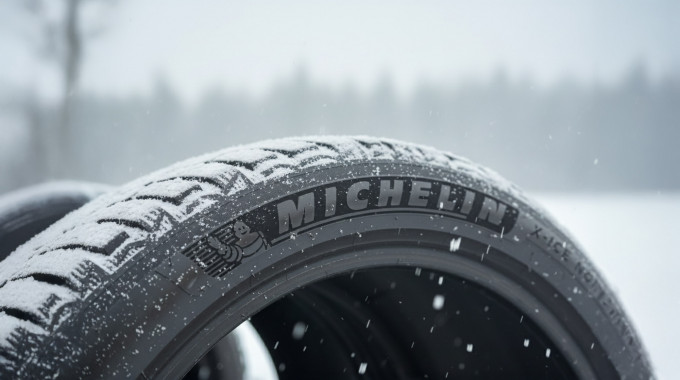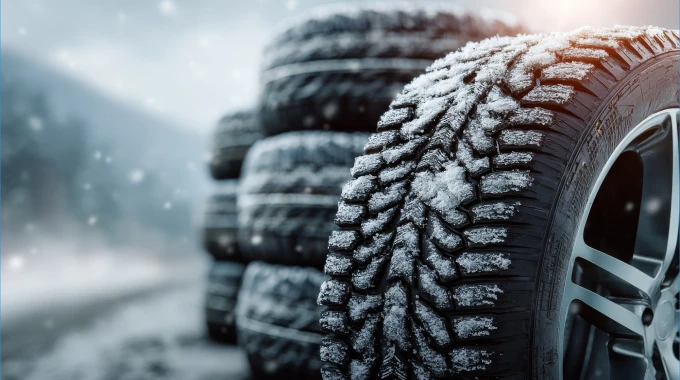
How to Buy Your First Car in 4 Simple Steps
If you’re buying a car for the first time, it can be intimidating, to be sure. You want to make the best decision possible because you’re going to be spending ample time in this vehicle, not to mention the obvious financial investment you’re making. But after this 5-minute read, you’ll see the process of buying a car doesn’t have to be so stressful.
Perhaps you’ve ridden one too many crowded buses, live in a remote area without public transit, you’re new to Canada, or are curious about a career as a ride-hail driver. Whatever the reasons, you’ve made the decision to buy your first car. It’s time to taste the sweet freedom of owning your own ride!
We’re going to help you navigate all the decisions that need to be made. The journey to a new car can be broken down into steps, and we’ll show you how Canada Drives can help you every step of the way. With a little guidance, you’ll be cruising down the road, flaunting your shiny new ride in no time.
1. Choose what type of car you want
Before making a vehicle purchase, you need to make some basic decisions about what type of car you want. Let’s put aside the dream of Range Rovers and Bugattis for a moment and think about your basic vehicle needs.
For example, will you be hauling around work equipment to job sites? A pick-up truck might be best in that situation.
If you have a young family, then an SUV makes sense with its storage space and passenger capacity.
For those urban drivers looking to cut back on gas consumption, and carbon output, then an electric or semi-electric car could be a consideration. Fuel efficiency is top of mind for many car buyers these days.
You should also take into account the manufacturer’s safety record, as well as consumer reports online about reliability and maintenance costs. The last thing you need is frequent, wallet-draining visits to the mechanic.
Read more: Your First Car: 10 New & Used Choices (Under $20,000)
2. Decide: cash or car loan
Whether you’re a young driver or someone getting their license later in life, affordability will probably be a key factor in your purchasing decision. If you managed to save up enough cash to buy a car outright – good for you! That’s not easy to do and you’re more ready than most.
However, most new car buyers rely on car loans. If you’re unfamiliar with a car loan, it works very similar to other types of loans. You borrow a set amount to cover the cost of the vehicle. You are given a set duration of time to pay it back, called a term, and a pre-arranged amount to pay back each month or every other week, for example. Over the course of the loan, you agree to pay interest on the principal amount of the loan.
Getting a car loan from most financial institutions takes time and requires a good credit score – an evaluated report of your credit history. But having good credit isn’t always possible, which is why Canada Drives removes credit as an obstacle for getting a loan.
Simplify Step 2: To help you decide how much cash and how much car loan you want to commit to your vehicle purchase, it’s wise to get pre-approved before you do anything else. With a pre-approval in your back pocket, you'll know exactly how much financing you qualify for before you start looking at vehicles. This will help you determine whether you want to add a down payment too or finance 100% of the purchase.
3. Shop new or pre-owned
Once you know what kind of car you want and how you’re going to pay for it, you need to determine whether you’re buying new or used. There are pros and cons to both as you can see in the table below:
|
Brand New |
Used / Pre-owned |
|
Pro: Exclusive incentives & promotions are offered on brand new cars. |
Pro: Excellent deals and savings to be made on high-quality vehicles in the used car market. |
|
Con: Depreciation hits you the hardest in the first year of ownership. |
Con: Reliability concerns if you buy in a private sale since servicing and warranties are not included. |
|
Pro: Offers reliability peace of mind. |
Pro: Depreciation isn’t as big of a concern. |
|
Con: You usually need a great credit rating to qualify for special promotions and offers. |
Con: More maintenance may be required for a used vehicle. |
Once you decide on buying new or used, it’s time to shop around for your car!
How to buy a brand new car
If you decide to buy a brand new vehicle, it can only be done at one location – the dealership. If you go down this path, try to do some research first on the make and model of a car you are interested in. The more knowledge you have, the more confident you will feel about your purchasing decision when you arrive at the dealership.
Once you’re settled on a car, you need to pay for it. Unless you’re planning to pay for it with cash or are already pre-approved, you need to apply for finance. Your dealer might advise you to boost your chances of approval with a:
- Down payment: An upfront partial payment, usually about 10% of the purchase price.
- Cosigner: A partner, family member, or close friend who applies with you and accepts liability if you default on your payments.
Of course, it's possible to get pre-approved without a down payment or a cosigner, and Canada Drives can help you locate an excellent selection of zero down options near you!
How to buy a used car
Buying used can also be done at a dealership, but not exclusively. You can also buy used cars privately and there’s a long list of online marketplaces that connect buyers with private sellers, including:
- Kijiji
- Craigslist
- Facebook Marketplace
Be very cautious with private car sales
When we told you to come to a dealership armed with research and information, that goes double for buying privately. It can be risky, to say the least.
You might find lower prices in the private marketplace, but you don’t have much in the way of consumer protection. Some shady sellers are out to take advantage of naïve buyers and it’s not uncommon to buy a car only to find out it has big problems soon after you take ownership.
If you can bring a mechanic with you when inspecting the car before purchase, it would be a huge advantage.
At a dealership, whether you find a CPO vehicle or not, you’ll benefit from a professional-grade inspection, servicing, and extended warranty protection. Remember, car dealerships are invested in customer satisfaction because return business and word-of-mouth are important revenue drivers.
Private sellers, on the other hand, are not vying for your loyalty, nor do they care about things like brand image or online reviews. If you choose the private sale route, you might find a good deal, but be mindful of the risks.
4. Gather the right documents
The documents you need to consider when buying a new or used car are similar. You need:
- Driver’s license: A valid driver’s license means you’re legally permitted to drive on Canadian roads. Your driver’s license is the very first thing you should arrange if you’re just starting out. It can take months to get and should be organized well in advance of buying your car. If you’re new to Canada, you might be able to swap your foreign licence for a Canadian driver’s licence easily depending on which country you’re from. Please check your province’s rules.
- Insurance: Auto insurance financially protects you, your car, and any third parties in the event of a theft or accident. It depends on your province, but some insurance is mandatory and some is optional. You can organize insurance at the dealership or you can shop around for the best rate.
- Registration certificate: The vehicle registration certificate proves that your car is legally registered to drive in your province and belongs to you.
Whether you buy brand new or gently used at a dealership, most dealers provide all the services and paperwork you need to drive your car off the lot. If it’s convenient, you can sign up for warranties at the dealership, and even insurance.
When buying used, there is an extra consideration. It’s important to think about the car’s reliability and lifespan, which is why vehicle history reports are so popular.
A vehicle history report provides information about accident history, safety recalls, and even the car’s value. It can give the buyer confidence and insight into what to expect from their used car purchase. Vehicle history reports are available for purchase from companies like Carfax Canada. This will help you avoid buying a lemon car, which is especially important if you’re buying a car in a private sale.
Shop confidently with Canada Drives
Streamline your journey to a new car with Canada Drives. Get pre-approved online in minutes to see what vehicles you qualify for. It's by far the easiest way to buy a car in Canada!







